I thought I’d do something a little different this year as a memorial day post. I happen to live in an area that’s pretty rich in history. Bucks County was one of the original three counties founded by William Penn in 1682. The others were Chester and Philadelphia counties. Going back that far, we have a lot of old cemeteries around here, a number of which hold war dead. We’ll start in the borough of Langhorne, a mile or so from my house:
Langhorne was not the name of the borough until 1876, when it was renamed after Jeremiah Langhorne. Prior to that it was called Attleborough, and at the time of the Revolution it was known as Four Lanes End. Nearby houses and churches served as field hospitals for the Battles of Trenton and the Battle of Princeton. Many did not make it. Buried here are 166 soldiers of the Continental Army. Burial in mass graves seems to have been the norm, rather than the exception, for Revolutionary War dead.
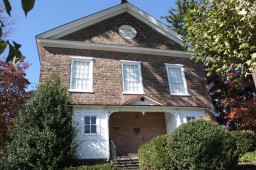 We headed up the road a piece to the Borough of Newtown. Newtown was founded by William Penn himself in 1684, only two years after the establishment of the county. The Newtown Presbyterian Church was founded in 1754, with the old church having been built in 1769. This historic church played a role during the American Revolution as a field hospital:
We headed up the road a piece to the Borough of Newtown. Newtown was founded by William Penn himself in 1684, only two years after the establishment of the county. The Newtown Presbyterian Church was founded in 1754, with the old church having been built in 1769. This historic church played a role during the American Revolution as a field hospital:
In December of 1776, because it was one of the largest buildings in town, General Washington commandeered it and used it as a hospital, a jail and a P.O.W. “camp.â€Â After the Battle of Trenton, several hundred Hessians were held there before they began their long march to Philadelphia where they would be exchanged for American soldiers.
Behind the old church is a grave site. I was surprised to find this.
Buried here are dead from the French and Indian War, or the Seven Years War as it is known in Europe. These soldiers died for Crown and Country, rather than for the United States, so their graves have been marked with the Union Jack.
Unfortunately, most of the grave markers are faded to the degree that they are unreadable without the use of a rubbing. Many of the men buried here are veterans who died years later. Some markers are more legible.
This is the grave marker of Colonel Anthony Torbert. Here’s some information I’ve been able to find about Colonel Torbert’s service.
The War of 1812, with Great Britain, stimulated the military ardor of the citizens of Bucks county, while the near approach of the enemy to Philadelphia gave their patriotism definite shape. The first effort to raise troops in the county was made at Newtown, where a meeting was held at Charles Hinkle’s tavern, Saturday, August 7, 1813, to form a volunteer company whose services were to be offered to the President. The 14th of July, 1814, the President called for ninety-three thousand five hundred militia, of which Pennsylvania was to furnish fourteen thousand. On the 16th, a number of the citizens of Bristol, Bensalem and Middletown met at Newportville and pledged themselves to march at a moment’s warning in the case the “forth district be invaded.” and, at an adjourned meeting on the 23rd, the citizens were recommended to meet together for drill. The citizens of Doylestown and vicinity agreed to associate for the purpose of acquiring some knowledge of the “art of war,” and met to drill in front of the court-thouse three times a week. Harman Vansant, then brigade-inspector, notified the enrolled inhabitants of the county to form themselves into three regiments, and select field officers. The upper regiment was composed of the enrolled inhabitants of Milford, Richland, Rockhill, Hilltown, Springfield, Durham, Nockamixon, Haycock and Bedminster; middle regiment–Tinicum, Plumstead, Solebury, Buckingham, New Britain, Warwick, Warminster, Warrington and Wrightstown; and the lower regiment, North and Southampton, Middletown, Newtown, Upper Makefield, Falls, Lower Makefield, Bensalem and Bristol township and borough. These regiments elected the following field-officers: Upper regiment–Colonel, Jacob Kinter, Lieutenant-Colonel, Christian Bloom, Majors, John Buck and John Stoneback. Centre–Colonel, William Long, Leiutenant-Colonel Samuel Abernathy, Majors, Samuel D. Ingham and Edward Yerkes. Lower–Colonel, Louis Bache, Lieutenant-Colonel, John S. Benezet, Majors Orren C. Starr and Anthony Torbert. The militia of this county were known as the First Brigade, Second Division, of which Samuel Smith was appointed Brigadier-General, William C. Rogers, Aid-de-camp, and Elisha Wilkinson, Quartermaster. Josiah Y. Shaw, of Doylestown, was appointed Aid-de-camp to Major-General Scheetz, division-commander. The quota from this county, consisting of eighty-eight artillery and eight hundred and fourteen infantry and riflemen, to be taken from the first and second classes of enrolled militia, was called for the 12th of August. They were taken from the four old militia regiments and consolidated into a battalion, of which Andrew Gikeson was appointed Leiutenant-Colonel and John S. Benezet and Isaac Griffith Majors. The drafted militia assembled at Thomas Bean’s tavern, Warminster, Sunday, the 18th of September, to march to Marcus Hook. General Smith and his staff were there. A large concourse of people came toether to see them off. The troops were formed in hollow square, when the Reverend Thomas B. Montanye delivered an appropriate address. They marched to Philadelphia, and thence to their destination in steamboats. The drafted militia were encamped in the court-hosue yard at Doylestown a day or two.
As best I can find, the militia units from Pennsylvania that were federalized for the War of 1812 were used to augment the defenses of Baltimore and Philadelphia, but did not see any action. Here are some other grave markers in the Cemetery of the Newtown Presbyterian Church.
UPDATE: BTW, if you want to go throw back a few pints at the Thomas Bean’s Tavern, it’s called Mike’s Bar and Grill now, but the building is still there and still operating as a tavern. Their website mentions nothing of the history, which is a shame.

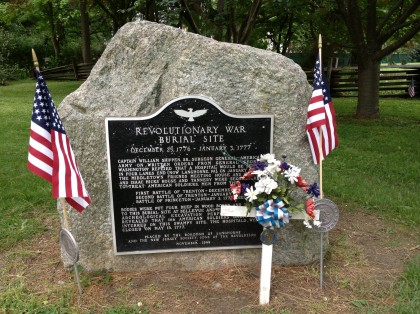
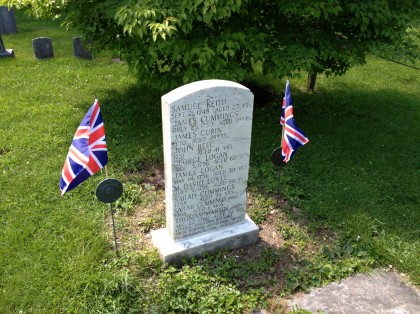
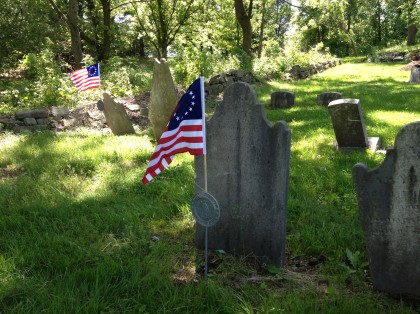
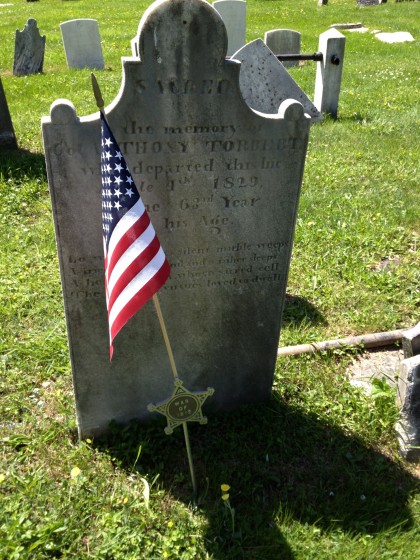
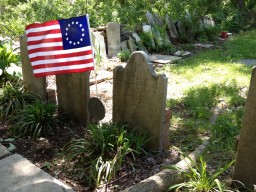
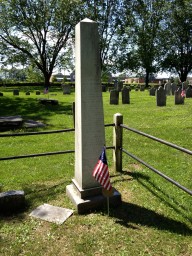
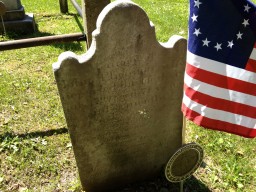
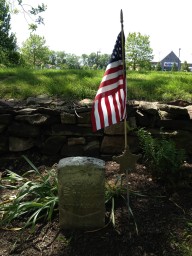
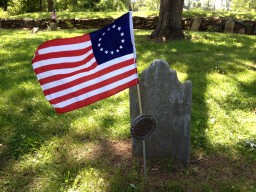
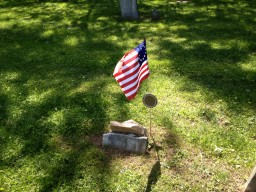
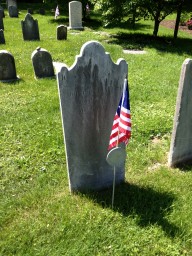
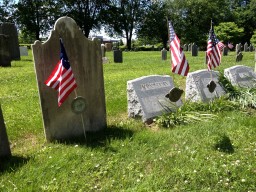
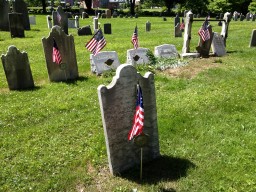
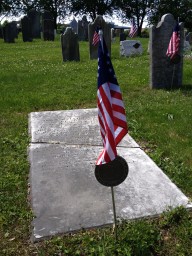
This is a great post, Sebastian. Thanks for sharing the history of PA patriots with us on this Memorial Day.
Thanks for posting. I just got back from visiting my ancestors graves in Mercer County. As you mentioned, many of the older stones are no longer legible. My Grand-daughter asked why some were so faded & some were still easy to read. I explained that some were sandstone & were badly weathered, but the granite was still in good shape. I then had to tell her that many people were very poor back then & simply couldn’t afford granite. At least she appreciated that we are far better off (at least financially) than our ancestors were, and now has a bit of a feeling were she comes from.
Merle
Something that moves me is, I went to school with people who had some of the same surnames of the people cited in the extract about Torbert.
I also thought it was interesting, and somewhat amusing, that even then they divided themselves into Upper Bucks, Central Bucks and Lower Bucks.
It would be interesting to study what those “regional differences” were then, if any.
For example, a simple historical factoid I know is that Bucks County did not support Lincoln in the 1864 election — as a whole, the county went for McClellan. What was the explanation for that, and did Lower, Central, and Upper Bucks vote differently? Was there a portion of the population that was not in favor of emancipating the slaves (e.g., laborers and immigrants) or was it the “peace vote” by the Quakers?
BTW, the “Thomas Bean Tavern” they mentioned mustering at, before marching to Philadelphia. The building is still a tavern, and is still there.
View Larger Map
Excellent post. Thank you for sharing this history.
Your picture of the French and Indian War era grave reminded me of a local cemetery, near Fort Indiantown Gap, with a grave of 3 Confederate soldiers (They were killed in an accident at a mill that used POW labor). Now I’m wondering who puts the “foreign” flags on graves.